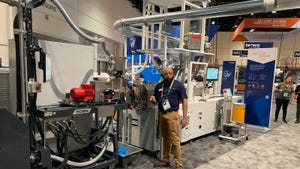Purac promotes PLA that acts like ABS
A new PLA compound promises heat stability and impact strength comparable to acrylonitrile butadiene styrene (ABS). Key to the technology is the stereo-complex structure derived from Purac's combination of L- and D-lactide monomers for "second-generation" polylactic acids (PLA). Purac noted that its new PLA compound performs at a comparable level to ABS in injection molding applications. That stereo-complex architecture allows PLA grades to have heat-stability up to 180ºC.
December 15, 2010
Purac is currently building a 75,000-tons/yr lactide plant in Thailand that's scheduled to start production in the fourth quarter of 2011, after it was formally announced in March 2010. Since 2009, it has manufactured D and L lactide monomers for PLA production at its Spanish production plant with annual capacity of several thousands tons.
Purac's Lex Borghans told PlasticsToday that Purac's L- and D-lactides are characterized by high purity, noting that his company is one of the few suppliers that directly produces lactides, with conversion of those lactides into PLA resin handled by partners. The lactides themselves are produced from lactic acid, which can be derived through the fermentation of different carbohydrates, including sugar cane, beet sugar, corn starch, and tapioca starch.
Purac currently has production in Brazil, the Netherlands, Spain, Thailand, and the U.S., marketing its products through a global network of sales offices and distributors.
Purac and Arkema announced a collaboration on functional lactide-based block copolymers in September. The companies said these materials would have enhanced thermo-mechanical and physical properties compared existing biobased polymers. That collaboration combines Arkema's organic catalysis ring-opening polymerization technology with Purac's L- and D-lactide monomers. —PTStaff
About the Author(s)
You May Also Like

